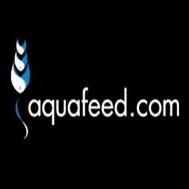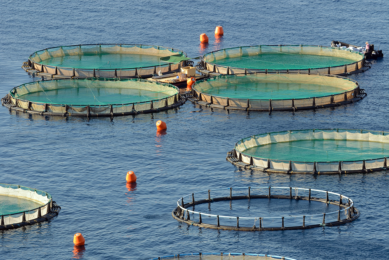Victam Asia: successful Aquafeed Horizons

The conference Aquafeed Horizons Asia, organised at the Victam Asia in Bangkok, March 6 provided a great update on the current issues in aqua feed ingredients and processing. The conference was organised by www.aquafeed.com and attracted around 160 attendants.
optimise aquafeed performance
Drs Peter Coutteau from Inve
Aquaculture Nutrition in Belgium talked about innovative concepts in aquafeed
formulation to optimise performance and health. According to Coutteau the aqua
feed industry is a dynamic one, but plagues with some problems. For example,
diseases, global scarcity of certain feed ingredients, consumer sensitivity for
quality and food safety and sustainable use of fish feed ingredients such as
fish meal and oil. He addresses that aqua feed diets are now more focused on
getting more nutrients out of existing ingredients. This has boosted the use of
the enzyme phytase for example. Also more digestibility enhancers are used in
feed formulations these days. Further work at Inve includes the understanding of
different mechanisms for different species, optimise the application of
ingredients in feed mills and fine tune the application of ingredients for
maximum formulation flexibility.
Novel
feeding attractants for sustainable aquaculture
Dr Andrew Moore from
the Centre for Environment, Fisheries and Aquaculture Science in the UK gave a
presentation about the development of novel feeding attractants for sustainable
aquaculture. He explained that attractants (such as the product Aquatice) can be
better used directly in the water instead of incorporate them in the feed
pellets. In addition, Moore emphasized that the use of pharmaceuticals may
negatively impact the sense of smell of the fishes and shrimps. This leads to
decreased detection of the attractants used. Trials with the product Aquatice
also showed higher growth and survival in tilapia, Moore pointed out. Also the
size, length and weight of the animals was better than the control
group.
Palatability improvements in shrimp
feed
Dr Vincent Fournier from Aquativ in France updated the
attendants on palatability improvements in shrimp feed. Fournier explained some
recent trials that have been conducted in which several palatability enhancers
were added to low fish meal shrimp diets. These diets were then compared with
diets that contained high levels of fish meal. Results showed no significant
differences between the low and high fish meal diets.
According to
Fournier, it is therefore possible to replace scarce raw materials such as fish
meal with more available plant based materials when using attractants.
Galen Rokey from Wenger Manufacturing in the US gave a speeche about the
ingredient trends and the effects on the extrusion process. He explained that
extrusion makes it possible to make very small particles, enables to make
sinking or floating feet and it enables to use a higher level of fat (internal
fat and fat coating). When using atmospheric coating, a maximum of 20% of fat
van be incorporated in the pellet. When a fat content of more than 20% is
desired, the vacuum coating techniques should be used.
Technical advancements in extruded shrimp
feeds
Joe Kearns, also from Wenger in the US gave a presentation
about the technical advancements in extruded shrimp feeds. Kearns explained that
the following factors need to be taken into consideration: the feed must target
the nutritional requirements of the animals (shrimps in this case), the feed
must be of high quality, it has to follow environmental compliance and lastly,
the feed has to have favorable economic considerations. Kearns explained that
fish feeding started with hand feeding of mixed feeds, then it moved to cold
forming/moist diets, then the feed was produced with the pellet cooker.
Nowadays, most aqua feed is produced by using extrusion.
pellets, smaller pellet sizes (for shrimps for example) and will eradicate anti
nutritional factors, viruses and other pathogens.
Kearns said that
Wenger is currently looking at producing more user friendly machines and
techniques to be able to produce multiple products at the same time. Wenger is
also working on increasing the capacity of the extruders.
Other speakers included
Dr Juadee Pogmanereet from the Thai Department of Fisheries, Dimitri Sclabos
from Tharos in Chile, Will Henry from Extru-Tech in the US, Colin Mair from
Cormal Technologies in the UK and Ernest Papadoyianis and Sal Cherch, both from
Neptune Industries in the US.
Related
website:
Aquafeed.com











